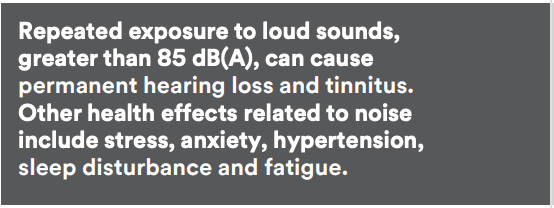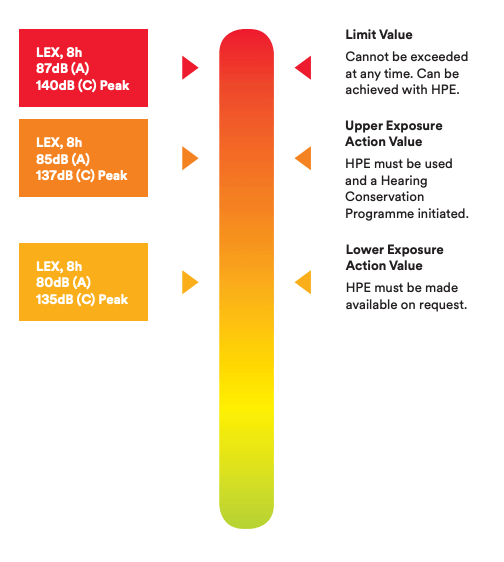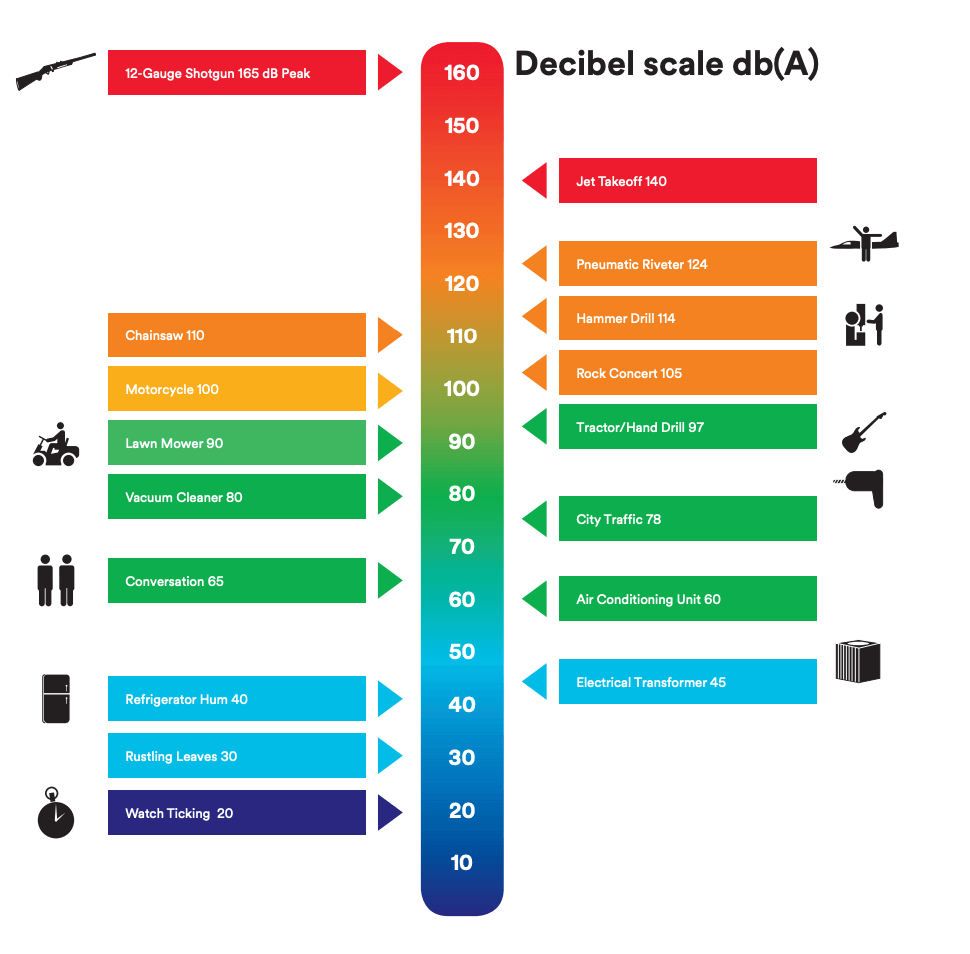The Challenges of Hearing Protection
- Minimise the risk associated with workplace noise exposure.
- Prevent Noise Induced Deafness (NID).
- Noise monitoring
- Noise control
- Provision of hearing protectors and display of warning signs
- Training for workers
- Audiometric examinations
The fact
[/vc_column_text][/vc_column][/vc_row][vc_row type="in_container" full_screen_row_position="middle" scene_position="center" text_color="dark" text_align="left" overlay_strength="0.3" shape_divider_position="bottom"][vc_column column_padding="no-extra-padding" column_padding_position="all" background_color_opacity="1" background_hover_color_opacity="1" column_shadow="none" column_border_radius="none" width="1/2" tablet_text_alignment="default" phone_text_alignment="default" column_border_width="none" column_border_style="solid"][vc_column_text]The #1 Reported Occupational Health Issue: data from the European Agency for Safety and Health at Work shows that noise-induced hearing loss is the most commonly reported occupational medical condition in the EU. One-Third of European Employees Potentially at Risk: according to the EU OSHA one-third of workers in Europe are exposed to potentially dangerous levels of noise.[/vc_column_text][/vc_column][vc_column column_padding="no-extra-padding" column_padding_position="all" background_color_opacity="1" background_hover_color_opacity="1" column_shadow="none" column_border_radius="none" width="1/2" tablet_text_alignment="default" phone_text_alignment="default" column_border_width="none" column_border_style="solid"][divider line_type="No Line"][image_with_animation image_url="12221" alignment="" animation="Fade In" border_radius="none" box_shadow="none" max_width="100%"][/vc_column][/vc_row][vc_row type="in_container" full_screen_row_position="middle" scene_position="center" text_color="dark" text_align="left" overlay_strength="0.3" shape_divider_position="bottom"][vc_column column_padding="no-extra-padding" column_padding_position="all" background_color_opacity="1" background_hover_color_opacity="1" column_shadow="none" column_border_radius="none" width="1/1" tablet_text_alignment="default" phone_text_alignment="default" column_border_width="none" column_border_style="solid"][vc_column_text]The regulation
[/vc_column_text][/vc_column][/vc_row][vc_row type="in_container" full_screen_row_position="middle" scene_position="center" text_color="dark" text_align="left" overlay_strength="0.3" shape_divider_position="bottom"][vc_column column_padding="no-extra-padding" column_padding_position="all" background_color_opacity="1" background_hover_color_opacity="1" column_shadow="none" column_border_radius="none" width="2/3" tablet_text_alignment="default" phone_text_alignment="default" column_border_width="none" column_border_style="solid"][vc_column_text]The Physical Agents (Noise) Directive 2003/10/EC states that suitable hearing protection devices be made available at the Lower Exposure Action Value and information on the harmful effects of noise provided to the worker. At Upper Exposure Action value suitable hearing protectors must be worn in areas where there is a risk of noise-induced hearing damage and entry to such area should be strictly controlled. In addition, a hearing conservation program be initiated which may include general health surveillance and audiometric checks. The Limit Value is the absolute ceiling limit that must not be exceeded at any time and can be achieved by using appropriate hearing protectors.[/vc_column_text][/vc_column][vc_column column_padding="no-extra-padding" column_padding_position="all" background_color_opacity="1" background_hover_color_opacity="1" column_shadow="none" column_border_radius="none" width="1/3" tablet_text_alignment="default" phone_text_alignment="default" column_border_width="none" column_border_style="solid"][image_with_animation image_url="12224" alignment="" animation="Fade In" border_radius="none" box_shadow="none" max_width="100%"][/vc_column][/vc_row][vc_row type="in_container" full_screen_row_position="middle" scene_position="center" text_color="dark" text_align="left" overlay_strength="0.3" shape_divider_position="bottom"][vc_column column_padding="no-extra-padding" column_padding_position="all" background_color_opacity="1" background_hover_color_opacity="1" column_shadow="none" column_border_radius="none" width="1/1" tablet_text_alignment="default" phone_text_alignment="default" column_border_width="none" column_border_style="solid"][vc_column_text]The real-world concerns of hearing protection
[/vc_column_text][/vc_column][/vc_row][vc_row type="in_container" full_screen_row_position="middle" scene_position="center" text_color="dark" text_align="left" overlay_strength="0.3" shape_divider_position="bottom"][vc_column column_padding="no-extra-padding" column_padding_position="all" background_color_opacity="1" background_hover_color_opacity="1" column_shadow="none" column_border_radius="none" width="1/1" tablet_text_alignment="default" phone_text_alignment="default" column_border_width="none" column_border_style="solid"][vc_column_text]- Variable Noise Levels: Every environment is different and workers can face a wide range of sound levels throughout the day and in different areas at the same facility.
- The Human Factor: Each person has a different shape, size and anatomy of the ear canal, so there is no one-size fits all hearing protection solution. The key to achieving optimal protection is having the best fit possible.
- Employee Communication: Where there is an essential need for workers to communicate or hear warning sounds it is vital that their hearing is protected from hazardous noise levels.
What types of sounds require hearing protection?
[/vc_column_text][/vc_column][/vc_row][vc_row type="in_container" full_screen_row_position="middle" scene_position="center" text_color="dark" text_align="left" overlay_strength="0.3" shape_divider_position="bottom"][vc_column column_padding="no-extra-padding" column_padding_position="all" background_color_opacity="1" background_hover_color_opacity="1" column_shadow="none" column_border_radius="none" width="1/1" tablet_text_alignment="default" phone_text_alignment="default" column_border_width="none" column_border_style="solid"][vc_column_text]At home and work, it’s important to understand which sounds may cause hearing loss and require hearing protection:[/vc_column_text][divider line_type="No Line"][vc_row_inner column_margin="default" text_align="left"][vc_column_inner column_padding="no-extra-padding" column_padding_position="all" background_color_opacity="1" background_hover_color_opacity="1" column_shadow="none" column_border_radius="none" width="1/2" column_border_width="none" column_border_style="solid"][image_with_animation image_url="12227" alignment="" animation="Fade In" border_radius="none" box_shadow="none" max_width="100%"][/vc_column_inner][vc_column_inner column_padding="no-extra-padding" column_padding_position="all" background_color_opacity="1" background_hover_color_opacity="1" column_shadow="none" column_border_radius="none" width="1/2" column_border_width="none" column_border_style="solid"][/vc_column_inner][/vc_row_inner][/vc_column][/vc_row][vc_row type="in_container" full_screen_row_position="middle" scene_position="center" text_color="dark" text_align="left" disable_element="yes" overlay_strength="0.3" shape_divider_position="bottom" shape_type=""][vc_column column_padding="no-extra-padding" column_padding_position="all" background_color_opacity="1" background_hover_color_opacity="1" column_shadow="none" column_border_radius="none" width="1/1" tablet_text_alignment="default" phone_text_alignment="default" column_border_width="none" column_border_style="solid"][nectar_animated_title heading_tag="h3" style="color-strip-reveal" color="Accent-Color" text="Hearing Protection Promotion"][divider line_type="No Line"][vc_column_text]Loud sounds can damage your hearing, but wearing the wrong or poorly fitting hearing protection can do the same.
Do you know what level of protection your employees are receiving from their hearing protectors? Learn more about 3M’s quantitative method for hearing protection fit testing.
Request a hearing fit the testing demo.
[/vc_column_text][divider line_type="No Line"][vc_row_inner column_margin="default" text_align="left"][vc_column_inner column_padding="no-extra-padding" column_padding_position="all" background_color_opacity="1" background_hover_color_opacity="1" column_shadow="none" column_border_radius="none" width="1/3" column_border_width="none" column_border_style="solid"][image_with_animation image_url="12109" alignment="" animation="Fade In" border_radius="none" box_shadow="none" max_width="100%" img_link="https://www.electgo.com/promotions/hearing-protection-promotion/"][/vc_column_inner][vc_column_inner column_padding="no-extra-padding" column_padding_position="all" background_color_opacity="1" background_hover_color_opacity="1" column_shadow="none" column_border_radius="none" width="1/3" column_border_width="none" column_border_style="solid"][/vc_column_inner][vc_column_inner column_padding="no-extra-padding" column_padding_position="all" background_color_opacity="1" background_hover_color_opacity="1" column_shadow="none" column_border_radius="none" width="1/3" column_border_width="none" column_border_style="solid"][/vc_column_inner][/vc_row_inner][/vc_column][/vc_row][vc_row type="in_container" full_screen_row_position="middle" scene_position="center" text_color="dark" text_align="left" overlay_strength="0.3" shape_divider_position="bottom"][vc_column column_padding="no-extra-padding" column_padding_position="all" background_color_opacity="1" background_hover_color_opacity="1" column_shadow="none" column_border_radius="none" width="1/1" tablet_text_alignment="default" phone_text_alignment="default" column_border_width="none" column_border_style="solid"][nectar_animated_title heading_tag="h3" style="color-strip-reveal" color="Accent-Color" text="Enquire Now"][gravityform id="7" title="false" description="false" ajax="false"][/vc_column][/vc_row][vc_row type="in_container" full_screen_row_position="middle" scene_position="center" text_color="dark" text_align="left" disable_element="yes" overlay_strength="0.3" shape_divider_position="bottom" shape_type=""][vc_column column_padding="no-extra-padding" column_padding_position="all" background_color_opacity="1" background_hover_color_opacity="1" column_shadow="none" column_border_radius="none" width="1/1" tablet_text_alignment="default" phone_text_alignment="default" column_border_width="none" column_border_style="solid"][nectar_animated_title heading_tag="h3" style="color-strip-reveal" color="Accent-Color" text="Discover More "][recent_posts style="slider_multiple_visible" category="3m" columns="4" button_color="Accent-Color" order="DESC" orderby="date" posts_per_page="4" post_offset="2"][/vc_column][/vc_row]40 million workers are exposed to loud noise and 13 million suffer from hearing disorders despite industry regulations*. You can advance your hearing conservation program with a customized and comprehensive approach to the hearing protection challenge. Implementing a solution that really makes a difference begins with understanding the hazards, the regulation, and the factors that impact protection.
*Source: European Agency for Safety and Health at Work
According to the Ministry of Manpower in Singapore, a Hearing Conservation Programme (HCP) is a programme that is implemented at a workplace to:
- Minimise the risk associated with workplace noise exposure.
- Prevent Noise-Induced Deafness (NID).
The 5 key elements of HCP are:
- Noise monitoring
- Noise control
- Provision of hearing protectors and display of warning signs
- Training for workers
- Audiometric examinations
- Companies with excessive noise exposure should implement HCP to minimise noise exposure and prevent noise-induced deafness.
The fact
The #1 Reported Occupational Health Issue: data from the European Agency for Safety and Health at Work shows that noise-induced hearing loss is the most commonly reported occupational medical condition in the EU. One-Third of European Employees Potentially at Risk: according to the EU OSHA one-third of workers in Europe are exposed to potentially dangerous levels of noise.


The regulation
The Physical Agents (Noise) Directive 2003/10/EC states that suitable hearing protection devices be made available at the Lower Exposure Action Value and information on the harmful effects of noise provided to the worker. At Upper Exposure Action value suitable hearing protectors must be worn in areas where there is a risk of noise-induced hearing damage and entry to such area should be strictly controlled. In addition, a hearing conservation program be initiated which may include general health surveillance and audiometric checks. The Limit Value is the absolute ceiling limit that must not be exceeded at any time and can be achieved by using appropriate hearing protectors.


The real-world concerns of hearing protection
- Variable Noise Levels: Every environment is different and workers can face a wide range of sound levels throughout the day and in different areas at the same facility.
- The Human Factor: Each person has a different shape, size and anatomy of the ear canal, so there is no one-size fits all hearing protection solution. The key to achieving optimal protection is having the best fit possible.
- Employee Communication: Where there is an essential need for workers to communicate or hear warning sounds it is vital that their hearing is protected from hazardous noise levels.
What types of sounds require hearing protection?
At home and work, it’s important to understand which sounds may cause hearing loss and require hearing protection:



Share this article on social media